With 10 days to go before the Euro 2016 football tournament kickstarts an exciting summer of sports, you may be thinking about splashing out on a new television to enjoy live broadcasts of these sporting events right in the comfort of your own home. Although neither the 2016 UEFA European Championship nor the Rio Olympics will be broadcast in glorious 4K UHD (ultra high-definition) in the United Kingdom, it makes more sense to purchase a 4K TV rather than a 1080p set, not only for a degree of future-proofing, but also because most manufacturers are reserving their best picture-enhancing technologies (including motion processing) for higher-end models.
But with so many different TVs from different brands on the market, which ones are the best for watching sports? Drawing upon our knowledge and experience of having scientifically reviewed more than 200 televisions since the launch of HDTVTest, we’ve decided to outline the key picture quality attributes to look for, and then list our top picks for 2016 to date.
In our opinion, this is the most important factor when choosing a TV for watching sports that involve fast-paced action such as football, rugby, Formula 1 racing or tennis – you’d want a display that can depict moving objects clearly without excessive motion blur. Here at HDTVTest, a parameter we routinely measure on every television we review is motion resolution to assess how well on-screen resolution is maintained during movement. A higher motion resolution translates to less motion blurring.
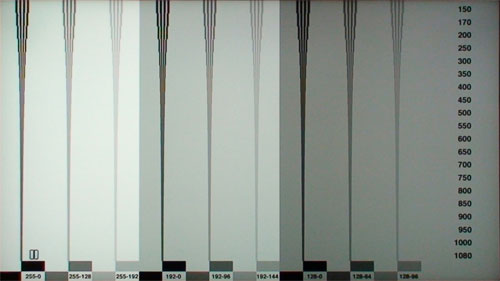 |
| Motion resolution pattern from Chapter 31 of FPD Benchmark Software test disc |
Traditionally plasma and CRT TVs deliver the sharpest motion owing to their impulse-based display characteristics, but alas, they are no longer manufactured. All the 4K TVs available to buy on the market (including LED LCDs and OLEDs) at this time of writing are hold-type displays, where one frame is displayed continuously until the next frame replaces it. As our eyes track the movement on screen, the persistence of the preceding static frame in our retina contributes significantly to what we perceive as motion blur, otherwise known as “sample-and-hold” effect.
The most straightforward way to reduce motion blurring on sample-and-hold displays involves inserting an artificial frame between the original frames, but this type of interpolated motion compensation invariably introduces interpolation artefacts into the picture. For example, you may notice the ball tearing up slightly as it whizzes past the crowd, or shimmering artefacts around running players.
A more promising technology to improve motion clarity on hold-type displays is black frame insertion (BFI) which, as suggested, adds a black frame between the original frames in an attempt to mimic the low retinal persistence property of impulse-type displays, although BFI usually incurs flicker and brightness drop due to how it works.
Over the past few years, Samsung has developed the most effective black frame insertion algorithm on their high-end models, providing the clearest motion among all the 4K TVs we’ve tested, as you can see for yourself from the following motion pursuit camera capture of the leading 2016 televisions:
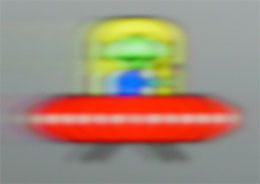 | 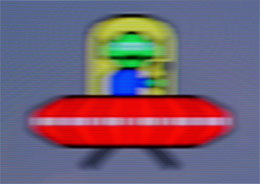 |
| Sony XD93 [Motionflow] “Custom” | LG E6 [TruMotion] “User” |
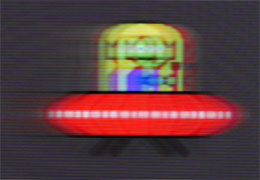 |  |
| Panasonic DX902 [IFC] “Custom” | Samsung KS9000 [LED Clear Motion] “On” |

For some reason, panning shots across a uniformly toned background (e.g. football field) seem to make screen uniformity issues such as darker bands and dirty screen effect (DSE) much more obvious. Instead of following the action on screen, your eyes will be affixed on the static impurities which aren’t even in the video source. While it may vary from unit to unit, from our experience LG OLED TVs (we’re not concerned about near-black vignetting/ streakiness which won’t affect bright sports content) and Samsung LED LCD sets tend to exhibit the best screen uniformity.
Although here at HDTVTest we don’t mind a curved screen, and usually get used to the curvature within a few minutes of normal viewing, there’s no doubt that a flat panel would be more suitable for watching football, since the geometry of straight lines (football pitch markings, goal posts, etc.) would be better preserved, especially for viewers who are sitting off-angle to the TV.
Which brings us to our next point…
If you’re inviting your friends and family around to enjoy some big-screen football action on your shiny new television, then another aspect you should consider is the display’s viewing angle. Here the OLED TVs reign supreme: due to their self-emissive properties, they suffer from very little drop-off in colours and contrast even from the sides at extreme angles. LED LCDs, on the other hand, manifest a brightening of blacks, loss of saturation and also colour shifts when viewed off-axis.
| LG E6 OLED | Sony XD93 LED LCD |
With these criteria in mind, here’s our favourite 2016 4K Ultra HD TVs for watching sports:
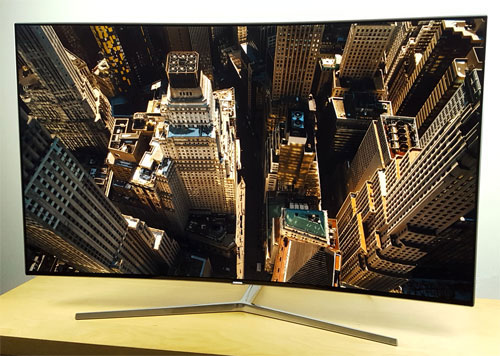
As mentioned before, Samsung UHDTVs generally exhibit high motion clarity and good screen uniformity, so it’s hardly surprising that our top choice comes from the South Korean manufacturer. We’ve reviewed the UE55KS9000, but if given the choice, we’d probably plump for the flat-screen KS8000 which is supposed to deliver very similar picture quality.
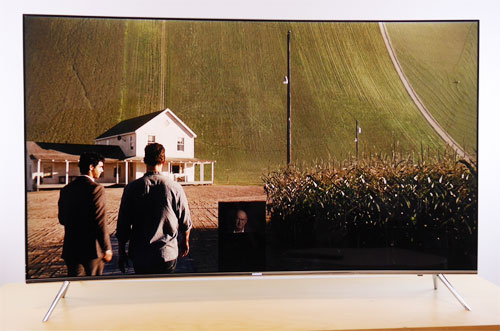
If you can’t afford the KS9000/ KS8000, then the step-down Samsung KS7500/ KS7000 is a good choice. There’s black frame insertion on board, and screen uniformity was impressive, though (not relating to sports) we found its HDR performance to be inferior to the 8/ 9 Series. Again, we’d prefer the flat version (KS7000) if available.

While its presentation of moving objects isn’t the sharpest even with the help of interpolation, the LG E6 OLED wins on the cleanliness of its motion (its instantaneous pixel response time means there’s no smearing/ black trails), extremely wide viewing angles, as well as flat form factor. General image quality is superb too, owing to its ability to render true blacks.
Happy hunting for your new TV, and good luck to whichever team you support!